How to Paint Trees: Techniques and Tips
Painting trees can be an exhilarating journey into the world of nature and creativity. Whether you're a budding artist or a seasoned painter, capturing the essence of trees can elevate your artwork to new heights. Trees are not just mere subjects; they embody life, growth, and the beauty of the natural world. So, how do you transform a simple canvas into a breathtaking portrayal of these magnificent beings? In this article, we will explore various techniques and tips that will help you enhance your skills and bring the natural beauty of trees to life in your artwork.
Before you dive into painting, it’s essential to arm yourself with the right materials. Think of it like preparing for a grand adventure; you wouldn't set out without the proper gear, right? Here’s a breakdown of what you’ll need:
- Brushes: Different brush shapes and sizes can create various textures. Flat brushes are great for broad strokes, while round brushes can help you add detail.
- Paints: Acrylics, oils, and watercolors each have unique properties. Acrylics dry quickly and are versatile, while oils offer a rich depth of color.
- Canvas or Paper: Choose a surface that complements your medium. Stretched canvas is excellent for oils, while watercolor paper is ideal for watercolors.
Remember, the right materials can make a significant difference in your painting experience and the final outcome. Investing in quality supplies is like putting on a good pair of shoes before a long hike—it just makes everything easier!
To paint trees realistically, it’s crucial to understand their anatomy. Trees are complex structures, and knowing their parts can help you portray them accurately. The trunk, branches, and leaves each play a vital role in the overall composition. The trunk provides strength and stability, while branches extend outward, creating a framework for the leaves. Understanding this structure allows you to create a sense of balance and proportion in your artwork.
Not all trees are created equal! Each type has its unique characteristics that can influence your painting style. For instance, the majestic oak with its sprawling branches and dense foliage differs vastly from the slender birch with its white bark. Here are some common types of trees you might consider painting:
- Oak: Known for its thick trunk and wide canopy.
- Maple: Famous for its vibrant fall colors.
- Pine: Recognizable by its needle-like leaves and conical shape.
By familiarizing yourself with these trees, you can choose which ones resonate with you and your artistic vision.
When it comes to painting trees, understanding the difference between deciduous and coniferous trees is crucial. Deciduous trees shed their leaves annually and display a variety of colors throughout the seasons, making them a fantastic subject for capturing change. On the other hand, coniferous trees, with their evergreen needles, maintain a consistent look year-round. This distinction impacts not only the colors you use but also the techniques you employ in your paintings. For example, when painting a deciduous tree, you might focus on the vibrant hues of autumn, while a coniferous tree would require a different palette, emphasizing greens and earthy tones.
Familiarizing yourself with common tree species can significantly enhance your painting. Here are a few popular trees that can inspire your artwork:
| Tree Species | Characteristics |
|---|---|
| Oak | Strong trunk, broad leaves, and vibrant fall colors. |
| Maple | Distinctive leaf shape, brilliant autumn foliage. |
| Pine | Needle-like leaves, conical shape, and rugged bark. |
By studying these species, you can develop a deeper understanding of their unique features and how to depict them in your art.
Color theory plays a vital role in painting trees. The right colors can evoke emotions and set the mood for your artwork. For instance, warm colors like reds and oranges can create a sense of warmth and comfort, while cool colors like blues and greens can convey tranquility and calmness. Understanding how to mix and layer colors will allow you to create depth and realism in your tree paintings. Think of color as the language of your artwork—each hue tells a story and evokes a feeling.
Leaves are a defining feature of trees and can make or break your painting. Capturing their texture, color, and light effects is essential for creating lifelike representations. One effective technique is to work in layers. Start with a base color, then gradually add highlights and shadows to create depth. This layering approach is akin to building a sandwich; each layer adds flavor and complexity to the final product!
Layering is essential for achieving realistic effects in leaf painting. Begin with a wash of your base color, then add subsequent layers to build texture and vibrancy. This method allows you to create a more dynamic and engaging painting. Remember, patience is key—allow each layer to dry before adding the next, just like waiting for a cake to bake before frosting it!
Light and shadow play a crucial role in creating dimension in your tree paintings. Understanding how light interacts with leaves can enhance the three-dimensionality of your work. Use lighter colors to represent areas where light hits, and darker shades to indicate shadowed areas. This contrast creates depth and realism, making your trees appear as if they are reaching out from the canvas.
Q: What type of paint is best for beginners?
A: Acrylic paint is often recommended for beginners due to its versatility, quick drying time, and ease of use.
Q: How can I improve my painting skills?
A: Practice regularly, experiment with different techniques, and don’t hesitate to seek feedback from fellow artists.
Q: Should I sketch my trees before painting?
A: Yes, sketching can help you plan your composition and understand the structure of the trees before you start painting.
By following these techniques and tips, you can develop your skills and create stunning representations of trees that capture their beauty and essence. Happy painting!
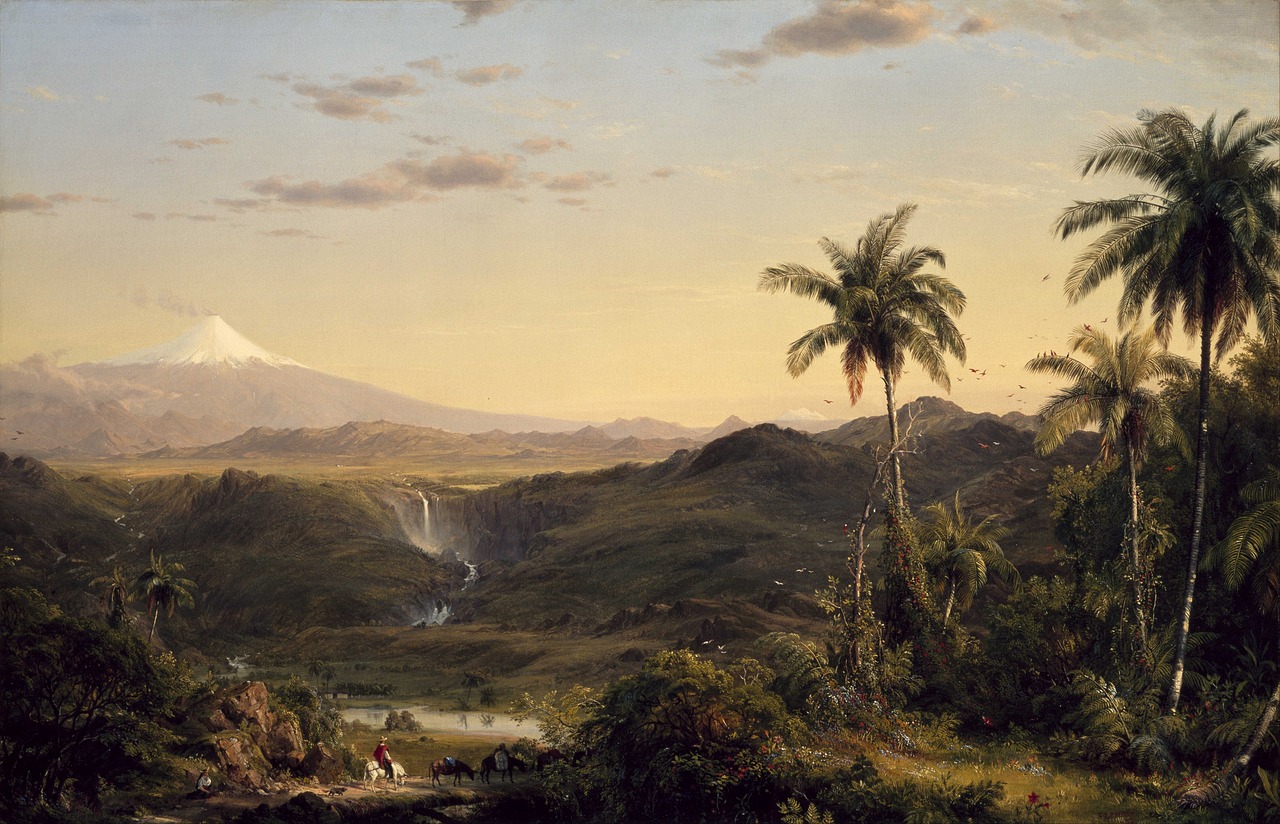
Choosing the Right Materials
When it comes to painting trees, the right materials can make all the difference. Imagine trying to build a sturdy treehouse without the right tools; it just wouldn’t work, right? Similarly, having the correct brushes, paints, and canvases is essential to capturing the essence of trees in your artwork. Let's dive into what you need to create stunning tree paintings.
First off, brushes are your best friends. The type of brush you choose can significantly affect the outcome of your painting. For tree trunks and branches, you might want to use a flat brush for broad strokes, while a round brush can help you achieve the fine details in the leaves. Here’s a quick breakdown of the types of brushes that can be beneficial:
| Brush Type | Best For |
|---|---|
| Flat Brush | Broad strokes for trunks and large areas |
| Round Brush | Detailing leaves and smaller branches |
| Fan Brush | Creating texture in foliage |
| Detail Brush | Fine lines and intricate details |
Next, let’s talk about paints. The type of paint you use can also affect the vibrancy and realism of your trees. Acrylics are popular due to their quick drying time and versatility, while oils allow for rich blending and depth. Watercolors can also be used for a more ethereal look. Here’s a quick comparison:
- Acrylics: Fast-drying, versatile, great for layering.
- Oils: Rich colors, longer drying time, excellent for blending.
- Watercolors: Light and airy, perfect for soft landscapes.
Lastly, the canvas you choose can impact your painting experience. A textured canvas can add depth and interest to your trees, while a smooth canvas allows for fine details. Consider the following options:
- Stretched Canvas: Ready to paint, available in various sizes.
- Canvas Boards: Rigid and easy to transport, great for practice.
- Watercolor Paper: Ideal for watercolor techniques.
In summary, selecting the right materials is crucial for bringing your tree paintings to life. The right brushes will help you create the shapes and details you envision, the right paints will ensure your colors pop, and the right canvas will provide the perfect backdrop for your masterpiece. So, before you start painting, take a moment to gather your materials and set yourself up for success!
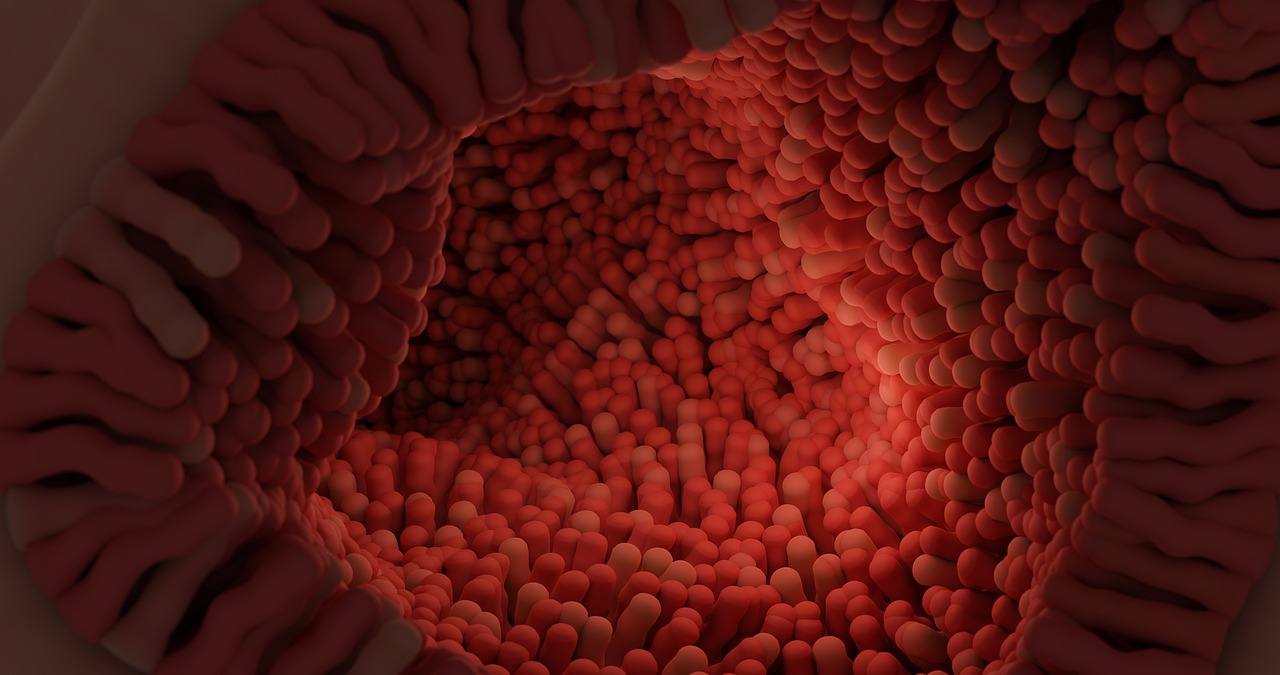
Understanding Tree Anatomy
When it comes to painting trees, having a solid understanding of tree anatomy is like having a map before you embark on a journey. Trees are not just a collection of leaves and branches; they are intricate structures that tell a story of growth, resilience, and beauty. By diving into the anatomy of trees, you can enhance your ability to capture their essence on canvas.
Let’s break down the key components of a tree that every artist should be familiar with:
- Roots: The roots anchor the tree into the ground, drawing in nutrients and water. While they may not be the focus in many paintings, understanding their role can help you depict a tree's stability.
- Trunk: The trunk is the backbone of the tree, providing support and structure. Its texture and color can vary widely between species, so paying attention to the bark's details is crucial for realism.
- Branches: Branches extend from the trunk, creating the framework that supports leaves and fruit. The way they curve and twist can add a dynamic quality to your painting.
- Leaves: Leaves are the crown jewels of a tree, responsible for photosynthesis. Their shapes, sizes, and colors can vary significantly, influencing the overall aesthetic of your artwork.
- Flowers and Fruit: Many trees produce flowers and fruit, which can add bursts of color and interest to your paintings. Understanding the seasonal changes in these elements can help you depict trees in various stages of life.
Each of these components plays a vital role in the tree's overall appearance and health. For instance, the texture of the bark can be rough and gnarled in older trees, while younger trees might have smoother surfaces. Observing these details can greatly enhance the authenticity of your artwork.
Moreover, it's essential to consider how trees interact with their environment. Factors such as sunlight, moisture, and soil type can affect their growth and appearance. For example, a tree growing in a sunny area might have a fuller canopy compared to one in a shaded location. This understanding will help you create more realistic and engaging compositions.
As you familiarize yourself with the anatomy of trees, you’ll find that your paintings will not only look more realistic but will also convey a deeper sense of connection to nature. So, grab your brush and start exploring the beautiful complexities of trees!
Q: Why is understanding tree anatomy important for painting?
A: Understanding tree anatomy helps you accurately depict the structure and features of trees, leading to more realistic and engaging artwork.
Q: What are the main parts of a tree I should focus on when painting?
A: Focus on the roots, trunk, branches, leaves, and any flowers or fruit. Each part contributes to the overall appearance and character of the tree.
Q: How can I observe tree anatomy effectively?
A: Spend time outdoors, sketching trees from different angles and in various seasons. Pay attention to how light affects their appearance and how their shapes change over time.
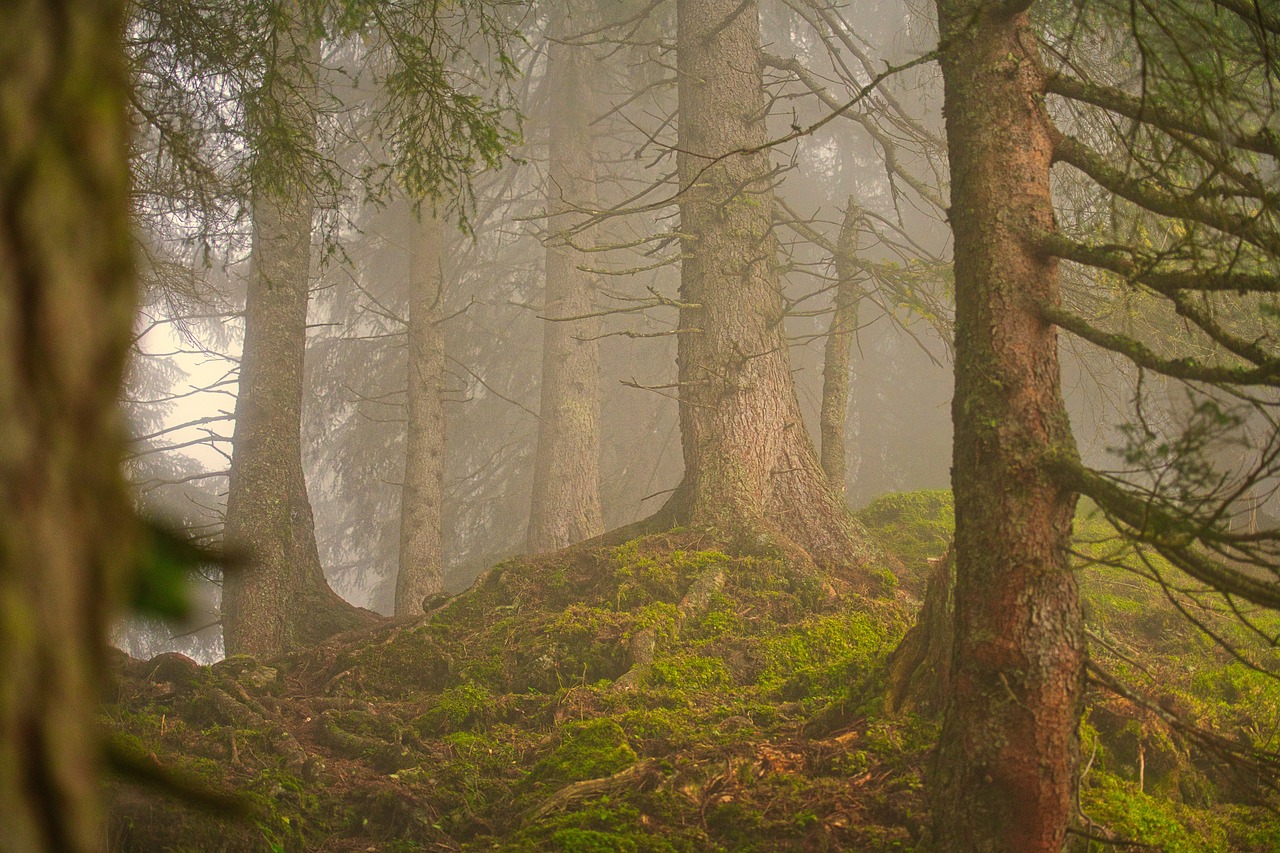
Types of Trees
When it comes to painting trees, understanding the various types of trees is essential for capturing their unique characteristics and beauty. Trees are not just mere plants; they are magnificent structures that tell stories of nature, resilience, and life. Each type of tree has its own personality, and as an artist, you must learn to communicate that personality through your brushstrokes. Think of trees as the characters in your painting; each one has its own quirks and features that make it stand out.
In the world of trees, we can broadly categorize them into two main groups: deciduous and coniferous. Deciduous trees, like the majestic oak or the delicate cherry blossom, shed their leaves in the fall, creating a beautiful tapestry of colors that can inspire any artist. On the other hand, coniferous trees, such as pines and spruces, maintain their needles year-round, offering a different kind of challenge and beauty to capture. Each of these types presents unique opportunities for artistic expression.
To further illustrate the differences, let’s take a closer look at some common tree species. Understanding these species will not only enhance your painting skills but also deepen your appreciation for the natural world:
| Tree Species | Characteristics |
|---|---|
| Oak | Broad leaves, strong trunk, vibrant fall colors |
| Pine | Needle-like leaves, conical shape, stays green year-round |
| Maple | Distinctive lobed leaves, brilliant red and orange in autumn |
| Birch | White bark, delicate leaves, often found in clusters |
As you explore these tree types, consider how their distinctive features can influence your painting style. For instance, the rugged bark of an oak tree may require a different approach than the smooth surface of a birch. Similarly, the vibrant colors of a maple tree in autumn can inspire a palette that evokes warmth and nostalgia. By paying attention to these details, you can create art that feels alive and engaging.
Moreover, don't forget that the environment plays a significant role in how trees appear. The setting, time of day, and weather conditions can dramatically alter the look of a tree. A pine tree standing tall against a winter sunset will have a completely different mood compared to the same tree under a bright summer sun. This interplay of light and shadow is what makes painting trees so exciting!
In conclusion, understanding the types of trees and their unique characteristics is a foundational skill for any artist looking to enhance their tree painting techniques. So, next time you pick up your brush, take a moment to observe the trees around you. What stories do they tell? How can you bring their beauty to life on your canvas?
- What are the main differences between deciduous and coniferous trees?
Deciduous trees lose their leaves in the fall, while coniferous trees retain their needle-like leaves throughout the year. - How can I choose the right colors for painting different types of trees?
Observe the trees in their natural environment and consider the time of year; use a color palette that reflects their seasonal beauty. - What techniques should I use for painting tree bark?
Experiment with texture by using a palette knife or dry brush technique to create the rugged appearance of bark.

Deciduous vs. Coniferous
When it comes to painting trees, understanding the differences between deciduous and coniferous trees is essential. Each type offers unique characteristics that can dramatically influence your painting style and techniques. Deciduous trees, such as oaks and maples, are known for their broad leaves that change color and fall off in the autumn. This seasonal transformation provides a rich palette of colors—from vibrant greens in spring to fiery reds and oranges in fall. These trees often have intricate branch structures that can create beautiful silhouettes against the sky.
On the flip side, coniferous trees, like pines and spruces, are characterized by their needle-like leaves and cones. They maintain their foliage year-round, giving them a more consistent appearance. The color palette for conifers tends to be more subdued, often featuring various shades of green and brown. Their unique shapes, often tall and narrow, provide a striking contrast to the broader forms of deciduous trees. When painting coniferous trees, you’ll want to focus on the texture of the needles and the way light interacts with their dense foliage.
To illustrate these differences, consider the following table that compares key features of both tree types:
| Feature | Deciduous Trees | Coniferous Trees |
|---|---|---|
| Leaves | Broad, flat leaves that change color | Needle-like leaves that remain year-round |
| Seasonal Changes | Lose leaves in autumn | Retain foliage throughout the year |
| Color Palette | Vibrant seasonal colors | Subdued greens and browns |
| Structure | Intricate branching | Tall, narrow shapes |
When painting these trees, it’s also important to consider the environment they grow in. Deciduous trees often thrive in temperate climates with distinct seasons, while coniferous trees are typically found in colder, mountainous regions. This environmental context can influence how you depict them in your artwork. For instance, a snowy landscape may call for the detailed texture of coniferous trees, while a sunny park scene might showcase the vibrant colors of deciduous trees.
Ultimately, whether you choose to paint deciduous or coniferous trees, understanding their unique characteristics will not only enhance your artwork but also deepen your appreciation for the natural world. So, grab your brushes and start exploring the beauty of these different tree types!
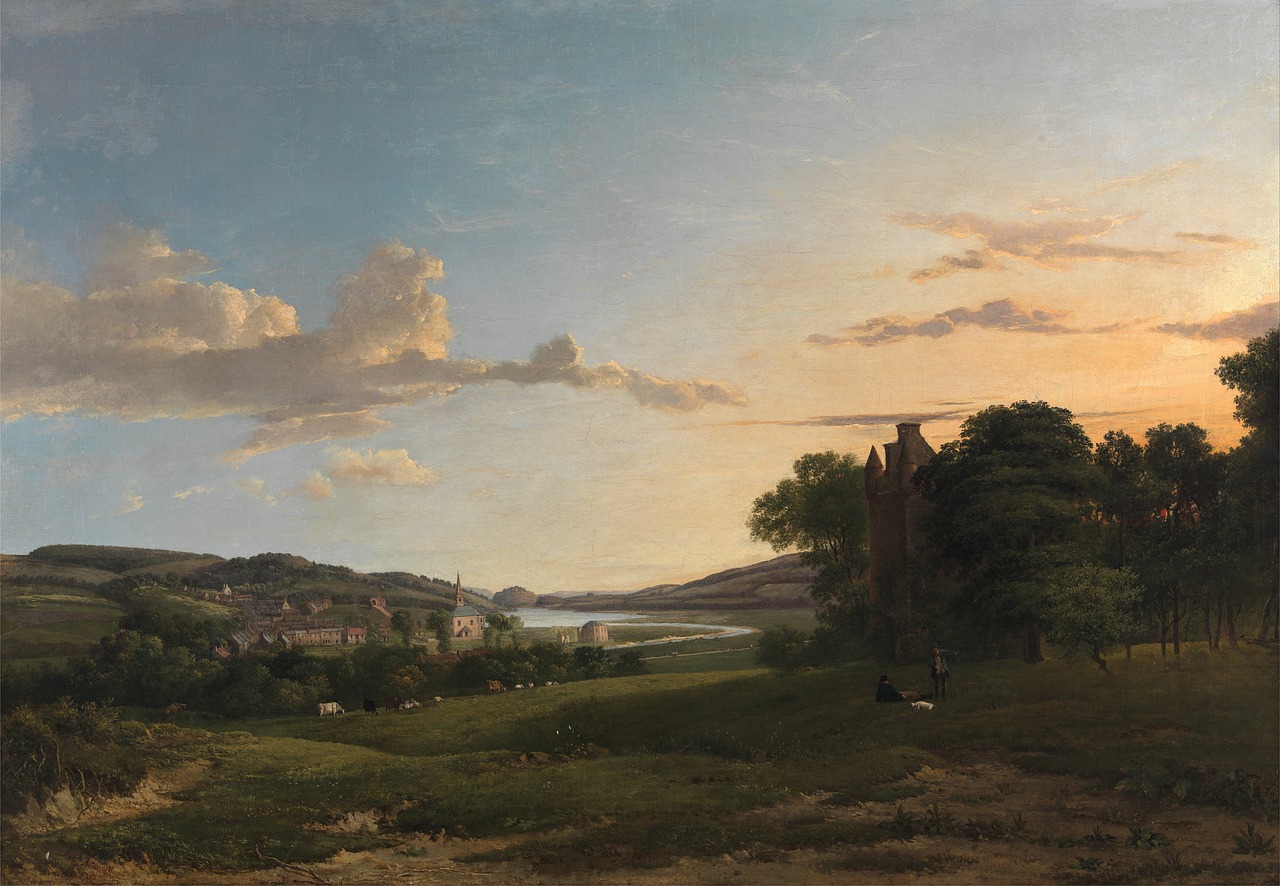
Common Tree Species
When it comes to painting trees, understanding the can significantly enhance your artwork. Different species not only have unique shapes and sizes but also exhibit a variety of textures and colors that can inspire your creativity. For instance, the majestic oak tree, with its broad canopy and thick trunk, presents a wonderful challenge for artists looking to capture its rugged beauty. On the other hand, the elegant willow, known for its drooping branches and delicate leaves, offers a softer, more fluid subject for painting.
Here are a few common tree species that every artist should consider:
- Maple: Renowned for its vibrant fall colors, the maple tree can provide a stunning array of reds, oranges, and yellows.
- Pine: With its needle-like leaves and conical shape, the pine tree is perfect for capturing a sense of height and depth.
- Birch: The distinctive white bark of the birch tree can add a unique contrast to your paintings, making it a popular choice among artists.
- Cherry Blossom: Known for its beautiful pink flowers, the cherry blossom tree is a favorite in springtime paintings, symbolizing renewal and beauty.
Each of these species comes with its own set of characteristics that can influence your painting style. For example, the texture of bark can vary significantly between species. The rough, furrowed bark of an oak tree can be painted with thick, textured brush strokes, while the smooth, white bark of a birch tree may require a more delicate touch to achieve a realistic effect. Additionally, the leaf structure varies widely; the broad leaves of a maple tree can be painted with bold colors and strokes, whereas the slender needles of a pine tree may necessitate a more precise and fine approach.
Moreover, understanding the seasonal changes in these trees can also play a crucial role in your artwork. For instance, capturing the vibrant colors of a maple tree in autumn can evoke a sense of warmth and nostalgia, while painting a cherry blossom tree in full bloom can convey a feeling of joy and renewal. By familiarizing yourself with these common tree species, you can not only improve your painting skills but also bring a deeper sense of realism and emotion to your work.
In summary, the diversity of tree species offers a rich palette for artists. Each tree tells its own story through its form, color, and texture, and by studying these common species, you can enhance your ability to capture the beauty of nature in your paintings.
Q: What is the best way to start painting trees?
A: Begin by choosing a reference photo or painting outdoors. Focus on the basic shapes and forms before adding details like leaves and bark texture.
Q: Do I need expensive materials to paint trees effectively?
A: Not necessarily! While high-quality materials can enhance your work, many artists create stunning pieces with affordable supplies. Focus on technique and practice.
Q: How can I improve my understanding of tree anatomy?
A: Study photographs and real trees. Consider sketching them to understand their structure, proportions, and how light interacts with them.

Color Theory in Tree Painting
When it comes to painting trees, understanding color theory is like having a secret map that guides you through the vibrant landscape of your artwork. Colors are not just pretty; they have the power to evoke emotions, set the mood, and create a sense of realism. Imagine walking through a forest in autumn—the rich oranges, deep reds, and golden yellows. These colors do more than just please the eye; they tell a story. So, how can you harness the magic of color theory in your tree paintings?
First, it’s essential to grasp the concept of the color wheel. This tool helps you understand how colors relate to one another. For instance, complementary colors—those that sit opposite each other on the wheel—can create striking contrasts that make your trees pop. If you're painting a green tree, consider adding touches of red or purple in the shadows to give it depth. On the other hand, analogous colors, which are next to each other on the wheel, can create harmony. Think of using various shades of green and yellow to depict sunlight filtering through leaves.
Another crucial aspect of color theory is the temperature of colors. Colors are categorized as either warm or cool. Warm colors (reds, oranges, yellows) can convey energy and vibrancy, while cool colors (blues, greens, purples) evoke calmness and serenity. When painting trees, consider the time of day and the atmosphere you want to capture. A sunrise scene might call for warm hues to depict the glow of the sun, while a twilight setting might benefit from cooler tones to create a sense of tranquility.
Moreover, the context of light plays a pivotal role in how colors appear. The way light interacts with your subject can change its perceived color dramatically. For example, a tree under the bright midday sun will look much different than the same tree at dusk. To capture this effect, you might want to use a glazing technique, where you layer transparent colors to build depth. This technique allows you to mimic the way light filters through leaves, creating a more realistic portrayal of your subject.
To help you visualize how these concepts come together, consider the following table that outlines some common color combinations and their effects in tree painting:
| Color Combination | Effect |
|---|---|
| Green + Red | High contrast, adds vibrancy |
| Yellow + Green | Bright and cheerful, evokes sunlight |
| Blue + Green | Calm and serene, perfect for shadows |
| Brown + Orange | Warmth and earthiness, great for autumn scenes |
In summary, color theory is an invaluable tool for any artist looking to paint trees. By understanding the relationships between colors, their temperatures, and the effects of light, you can elevate your artwork from simple depictions to compelling visual narratives. So, the next time you pick up your brush, remember: it’s not just about the trees; it’s about the colors that bring them to life!
- What colors should I use for painting trees in different seasons?
For spring, use bright greens and pastels; for summer, vibrant greens and blues; for autumn, warm oranges, reds, and yellows; and for winter, cool blues and grays. - How can I make my tree paintings look more realistic?
Focus on understanding light and shadow, use layering techniques, and incorporate a variety of colors to represent different elements. - What is the best way to learn about color theory?
Consider taking online courses, reading books on color theory, or practicing with a color wheel to understand how colors interact.

Techniques for Painting Leaves
Leaves are often the most captivating part of a tree, showcasing a stunning variety of shapes, colors, and textures. When it comes to painting leaves, understanding the nuances of their appearance and how to replicate them on canvas is essential. One of the first techniques to master is color blending. Leaves are rarely a single shade; they exhibit a range of greens, yellows, and even reds, depending on the season and lighting. To achieve a realistic look, consider using a palette that includes various shades of green mixed with yellows and blues. This will allow you to create depth and vibrancy in your leaf paintings.
Another important technique is texture creation. The texture of leaves can vary significantly; some are smooth, while others might be rough or even waxy. To depict this, you can experiment with different brush strokes. For instance, using a fan brush can help create the illusion of fine veins and edges on leaves, while a flat brush can be used for broader strokes to represent the leaf's body. Additionally, using a dry brush technique can add a layer of realism by allowing the underlying canvas to show through, giving the leaves a more natural appearance.
When painting leaves, it's also crucial to understand how light and shadow interact with them. Leaves are not just green blobs; they have highlights and shadows that give them dimension. To capture this effect, start by identifying your light source. The side of the leaf facing the light will be brighter, while the opposite side will be darker. You can use a combination of glazing and scumbling techniques to layer colors, allowing the light to reflect off the surface of the leaves and create a three-dimensional effect. For example, applying a light glaze over a darker base color can simulate the way sunlight filters through the foliage.
Lastly, consider the seasonal changes in leaves. Each season brings a different palette to the table. In spring, leaves are often a bright, fresh green, while in autumn, they can transform into a vibrant tapestry of oranges, reds, and browns. This variation not only challenges your skills as an artist but also enriches your artwork. To help you visualize these changes, here’s a simple table that outlines the typical colors associated with leaves in different seasons:
| Season | Common Leaf Colors |
|---|---|
| Spring | Bright Green, Light Yellow |
| Summer | Dark Green, Olive |
| Autumn | Red, Orange, Brown |
| Winter | Gray, Brown (bare branches) |
In conclusion, mastering the techniques for painting leaves can significantly enhance your tree artwork. By focusing on color blending, texture creation, light and shadow dynamics, and seasonal variations, you'll be able to create stunning, lifelike representations of leaves that will bring your tree paintings to life.
Q: What type of brush is best for painting leaves?
A: A fan brush is often recommended for creating the texture of leaves, while a flat brush can be used for broader strokes. Experiment with different brushes to find what works best for your style!
Q: How can I make my leaves look more realistic?
A: Focus on color blending and layering techniques. Use multiple shades of green and incorporate highlights and shadows to give your leaves dimension.
Q: Is it important to consider the season when painting leaves?
A: Absolutely! Each season offers a unique color palette that can greatly influence the mood and realism of your artwork.
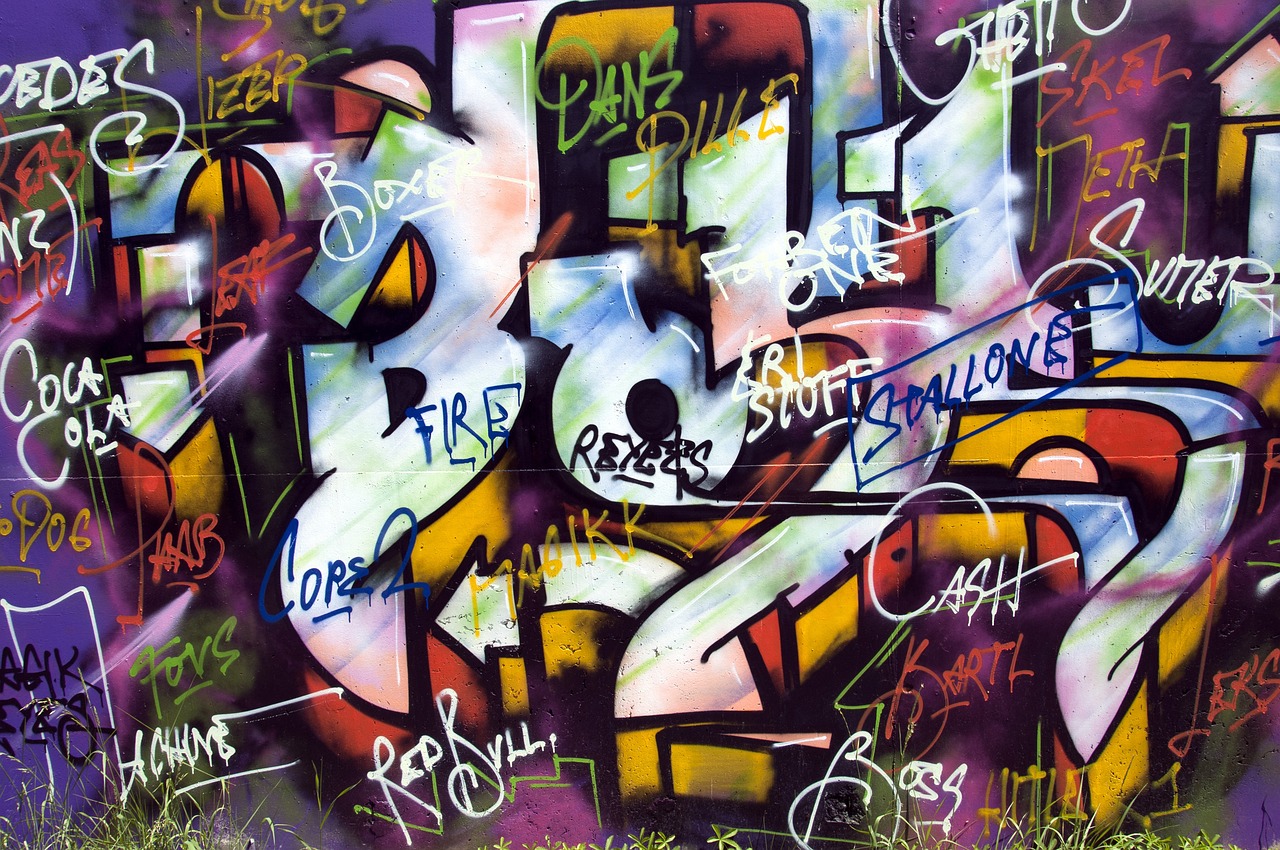
Layering Techniques
When it comes to painting leaves, are your best friends. This method allows you to build depth and complexity in your artwork, making leaves appear more lifelike and vibrant. Think of layering like building a cake; each layer adds flavor and texture, and the more layers you have, the richer the experience. Start with a base color that represents the general shade of the leaves you are painting. This could be a light green for spring leaves or a deeper green for summer foliage. Once you have your base, let it dry completely before moving on to the next step.
Next, you’ll want to introduce variations of color. Use a slightly darker shade to create shadows and a lighter shade for highlights. This contrast is crucial for achieving a sense of realism. Imagine how sunlight filters through the leaves; the areas directly lit by the sun will be lighter, while the parts in shadow will be darker. To apply these colors, use a technique called glazing. This involves applying thin, transparent layers of paint over your base layer. Each glaze should be allowed to dry before adding another. This technique not only enriches the color but also adds a beautiful depth that can make your leaves pop.
Another important aspect of layering is to consider texture. To create realistic leaf textures, you can use a dry brush technique. This involves using a brush with very little paint on it and lightly dragging it over the surface of the canvas. This method allows the underlying layers to show through, creating a sense of texture that mimics the natural veining of leaves. Additionally, incorporating a stippling technique can further enhance the surface quality. By using the tip of your brush to create small dots of color, you can simulate the intricate details found in real leaves.
Remember, patience is key when using layering techniques. It might be tempting to rush through the process, but taking your time will yield much better results. Allow each layer to dry completely before adding the next, and don't hesitate to step back and evaluate your work from a distance. This will help you see how the layers interact and whether adjustments are needed.
In summary, mastering layering techniques can significantly elevate your tree paintings. By carefully building up colors, textures, and shadows, you create a rich, dynamic representation of leaves that captures the essence of nature. So grab your brushes, and let your creativity flow as you explore the beautiful world of layered painting!
- What is the best type of paint for layering? Acrylics and oils are both excellent for layering due to their versatility and drying times.
- How long should I wait between layers? It's generally best to wait until each layer is completely dry, which can range from a few minutes to several hours, depending on the medium used.
- Can I layer different types of paint? While it's possible, it's usually best to stick to one type of paint for layering to avoid issues with adhesion and drying times.

Capturing Light and Shadow
When it comes to painting trees, is like adding the final brush strokes that breathe life into your artwork. Think of light and shadow as the dynamic duo that creates depth and dimension, transforming a flat canvas into a vibrant three-dimensional scene. Without these elements, your trees may appear lifeless and one-dimensional. So, how do you achieve this magical effect?
First, it’s essential to understand the direction of light. Observe how sunlight interacts with trees in nature. Is it filtering through the leaves, casting dappled shadows on the ground? Or is it a bright, sunny day where shadows are sharp and defined? Identifying the light source will help you determine where to place highlights and shadows in your painting. A simple tip is to imagine a light bulb above your canvas and visualize how it would illuminate the tree.
Next, consider the value scale. This refers to the range of lightness and darkness in your painting. To create realistic shadows, you need to mix your colors carefully. Start with a mid-tone for the base of the tree, then gradually add darker shades for the shadows. This layering technique helps in achieving a natural gradient. Remember, shadows are rarely just black; they often contain hues from the surrounding environment. For instance, a shadow cast by a green tree might have subtle hints of blue or purple, depending on the light and background.
Additionally, don’t forget about the texture of the bark and leaves. Shadows can create intricate patterns that enhance the realism of your painting. Use a combination of brushes to achieve different textures. A stiff-bristled brush can create rough bark textures, while a softer brush can help in blending the edges of your leaves. Experimenting with various tools and strokes will lead you to discover unique ways to represent light and shadow.
Finally, practice makes perfect! Consider setting up a small still life with a tree branch or even painting en plein air. This hands-on experience allows you to observe how light and shadow play across the surface in real-time. You might even want to keep a sketchbook handy to jot down your observations and practice quick studies. This way, you can refine your technique and develop a personal style that truly captures the essence of trees.
- What is the best time of day to observe light on trees? Early morning and late afternoon are ideal as the light is softer and creates longer shadows.
- How can I practice capturing light and shadow? Set up a still life or paint outdoors to see how natural light affects your subject.
- Should I use pure black for shadows? No, using a mix of colors will create more realistic shadows.
Frequently Asked Questions
- What materials do I need to paint trees?
To paint trees effectively, you’ll need a variety of materials. Start with high-quality brushes, including flat and round brushes for different textures. Acrylic or oil paints are great choices, as they offer vibrant colors and good coverage. Don’t forget a sturdy canvas or watercolor paper to bring your artwork to life!
- How can I understand tree anatomy for better painting?
Understanding tree anatomy is crucial for creating realistic paintings. Take some time to study the structure of trees, focusing on elements like trunks, branches, and leaves. Observing real trees or using reference photos can help you grasp their unique forms and proportions, making your artwork more accurate and lifelike.
- What’s the difference between deciduous and coniferous trees?
Deciduous trees shed their leaves annually, while coniferous trees maintain their needle-like leaves year-round. This difference affects their appearance and how you should paint them. Deciduous trees often showcase a vibrant array of colors in fall, while coniferous trees present a more uniform green palette. Understanding these characteristics will help you capture their essence in your paintings.
- How does color theory apply to painting trees?
Color theory is essential for conveying mood and realism in tree paintings. Different colors can evoke various emotions; for instance, warm colors can suggest a sunny day, while cool colors may indicate a tranquil evening. Learning how to mix and layer colors will give your trees depth and vibrancy, making them pop off the canvas!
- What techniques can I use to paint leaves effectively?
When painting leaves, focus on texture and color blending. Techniques like glazing and layering can add depth and realism to your leaves. Experiment with different brush strokes to mimic the natural variations in leaves. Capturing light and shadow is also key; consider where the light hits the leaves and how shadows fall to create a three-dimensional effect.
- How can I capture light and shadow in my tree paintings?
Capturing light and shadow is vital for adding dimension to your tree paintings. Observe how light interacts with trees in real life—notice the highlights on leaves and the shadows cast by branches. Use lighter colors for highlights and darker shades for shadows, layering them to create a realistic effect. This technique will make your trees feel more alive and dynamic!



















